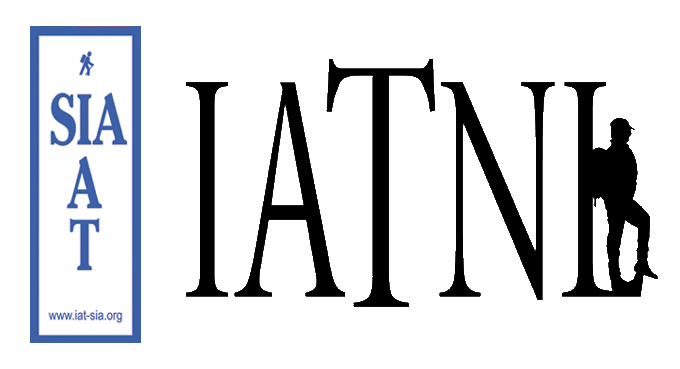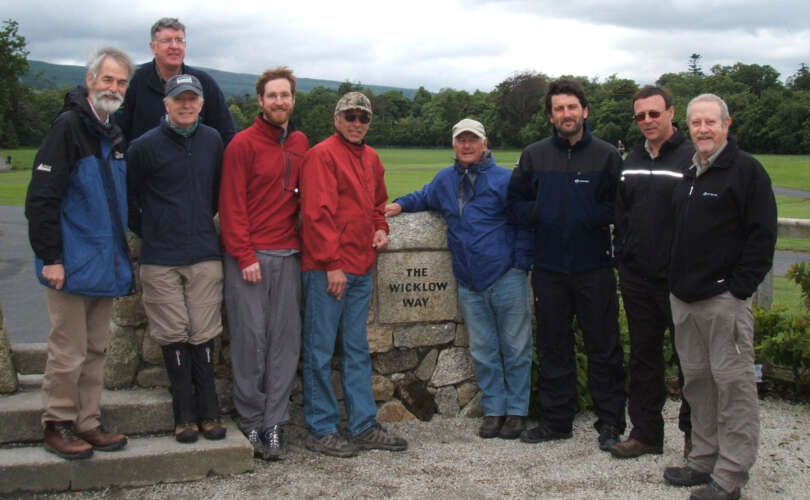On June 18, following the IAT AGM in Reykjavik, Iceland, representatives of the International Appalachian Trail from both sides of the Atlantic Ocean traveled to the Mid Atlantic Ridge in Thingvellir National Park, and bridged the geological divide between North America and Europe.

Monday’s full-day of touring began with a one-hour bus drive from Reykjavik to Thingvellir, where ITA President and park warden Ólafur Örn Haraldsson – a renowned arctic explorer – gave a guided tour through the park, from the ridge (aka Mid Atlantic Rift) to the historic Althing outdoor assembly, held on the plains of Þingvellir beginning in 930 AD.

The visit provided a great photo opportunity at one of earth’s most significant geological features, which caused both the North American, Eurasian and Africa continental plates to separate, and the Appalachian, Caledonian, and Atlas Mountains to diverge from their colliding birthplace on the super-continent Pangea, more than 200 million years ago.

IAT Founder Richard “Dick” Anderson at the Mid Atlantic Rift (Will Richard photo)

Will Richard Photo

At the Althing, a banner of a Mid Atlantic Pledge was unveiled to mark the occasion, which British Geological Survey Team Leader and IAT Scotland representative Hugh Barron aptly described as the IAT uniting what the Mid Atlantic Ridge divided.

Left to right: IAT Europe Geologist Hugh Barron; IAT Europe Vice Chair Magne Haugseng; IAT North America Geologist Walter Anderson; IAT Maine President Don Hudson; ITA President and Thingvellir Warden Ólafur Örn Haraldsson; IAT Founder Richard “Dick” Anderson; IAT Chairperson Paul Wylezol; and IAT Recording Secretary Caroline Swan


After touring the Park and Ridge, Ólafur graciously invited the group to have lunch in the nearby garden of his summer home.

From there the tour continued on to Kerið volcanic crater, formed approximately 6,500 years ago on the northern end of a row of craters known as Tjamarholar,

and Seltún hot springs, which belongs to one of four volcanic systems that lie along the ruptive fault on Reykanes Peninsula. The steam vents here are surrounded by large sulphur deposits, which in earlier times were exploited for the production of gunpowder.

Of course no tour of Iceland would be complete without a visit to a Norse site, so the final stop before dinner at the Viking Village was Vikingaheimar, a museum dedicated to the settlement of Iceland and the Viking exploration of North America. Also exhibited is the Viking ship Islendingur, which in the year 2000 sailed to L’Anse aux Meadows, Newfoundland – location of the only authenticated Norse site in North America and the northern terminus of the IAT – and other ports in Canada and the United States, to mark the 1,000 anniversary of the Norse discovery of America.

The location for dinner certainly matched the Viking theme, as the restaurant was adorned with norse-style wooden carvings, a viking clad entertainer, and half-naked Scottish maidens abducted for their weaving skills.

Ok, the latter was a little artistic license. They really weren’t there for the weaving! In any case, the meal, company, and atmosphere were a terrific end to a fantastic day, …. and it ended without any rape and pillage!

Many thanks to Ólafur and Kristian for the splendid tours, and for ITA’s Palli for helping to arrange them.
Skál



